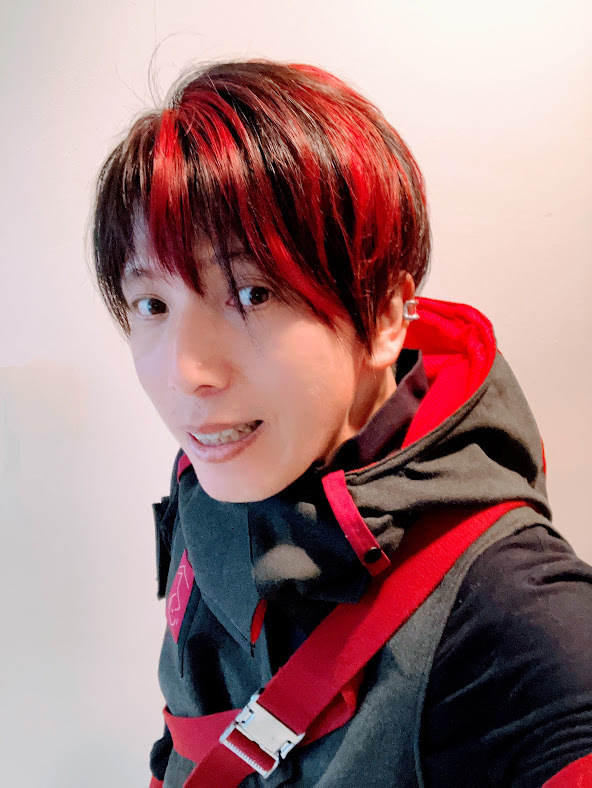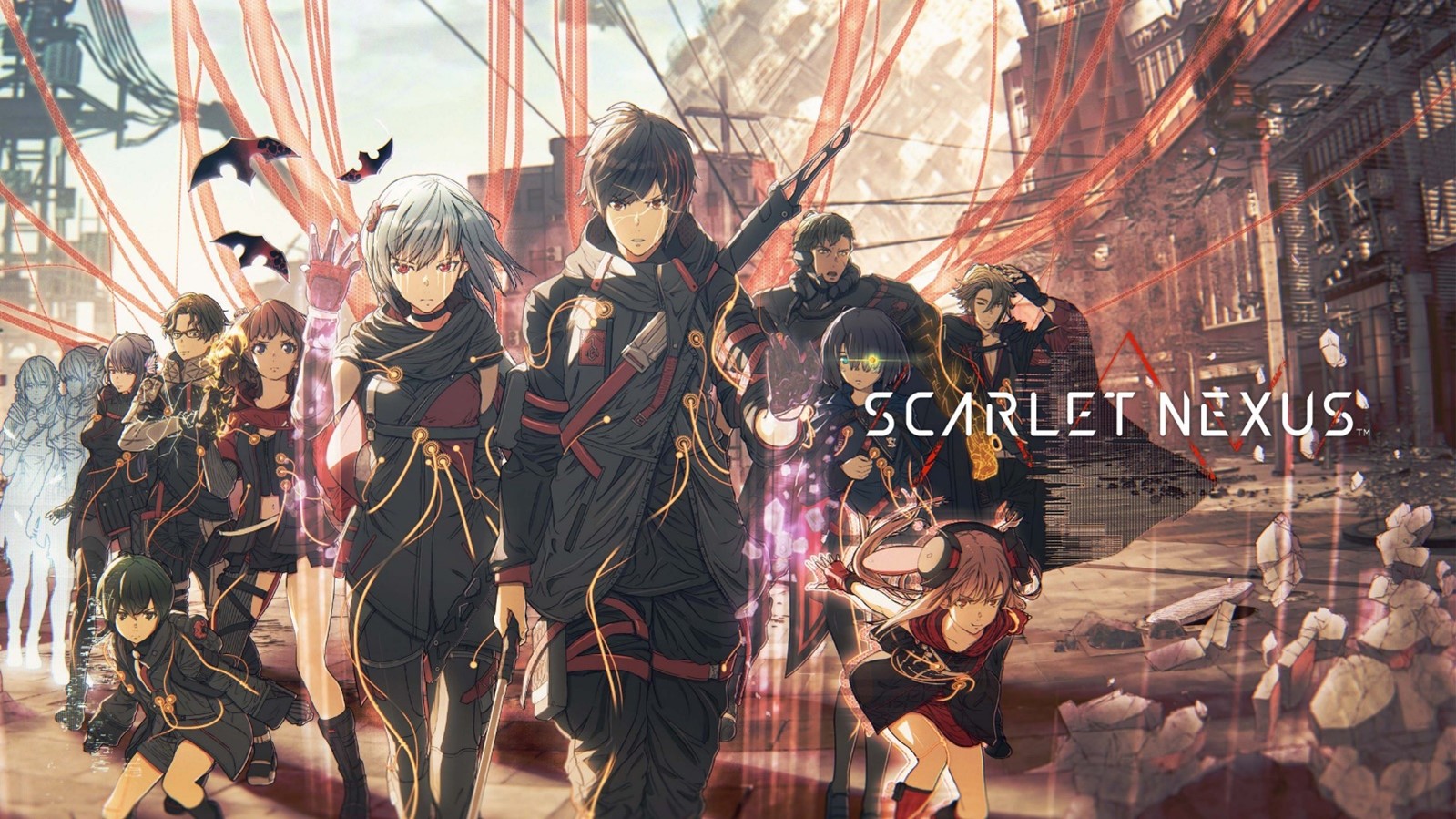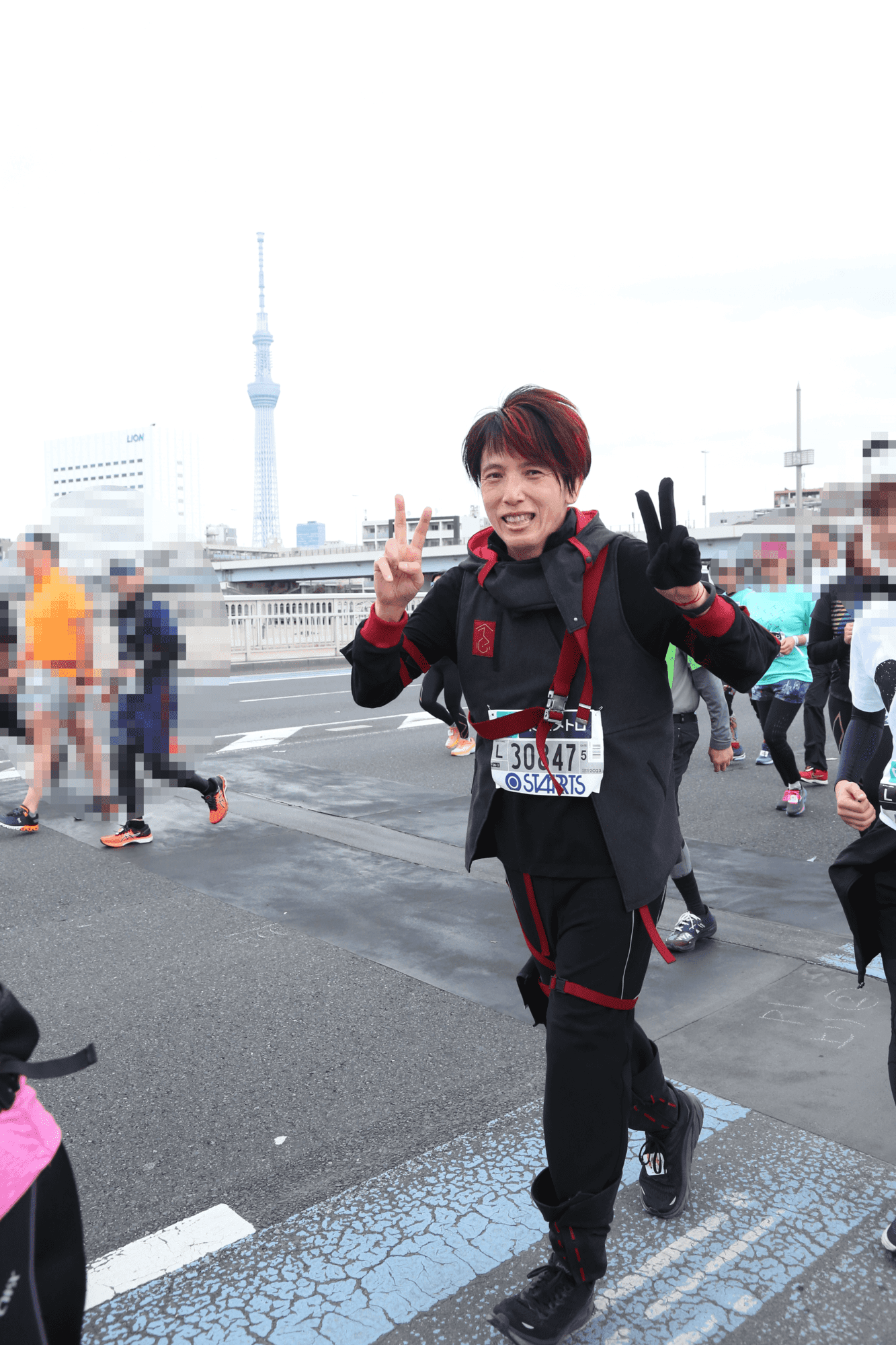In thi episode, we chatted with the SCARLET NEXUS Game Director Kenji Anabuki. He shared some behind-the-scenes stories about the new SCARLET NEXUS IP, his passionate thoughts on game development, and more!
SCARLET NEXUS Game Producer and Director Kenji Anabuki

Game Producer and Director
Kenji Anabuki
――― Please tell us about your current affiliation and what you’re working on now.
I currently belong to Group 3 under Studio 3 and have worked with the SCARLET NEXUS development team up until the last fiscal year.This game is set in a world where human brains and technology have advanced quite a bit, and features action packed combat that leverages the player’s extra-sensory ability, telekinesis, as well as the various abilities possessed by his comrades. Players will also be able to experience a profound story from the perspectives of each of the two main characters in this completely original title.
――― I recall that you previously worked on the Tales series, is that correct?
Yes, I used to work at a development studio called Telenet Japan and worked on the Tales series there. It then became the Namco Tales Studio, which eventually merged with Bandai Namco Games, and then spun-off into Bandai Namco Studios. So although I’ve never left the company, its name has changed a few times. (laughs)
I started SCARLET NEXUS during a time where the desire to establish a new IP was especially strong within the company. There was an in-house contest where I submitted a proposal for a different title which made it to the final rounds, but unfortunately did not end up taking shape.
However, I was still working on SCARLET NEXUS separately from the in-house contest and was able to get the project approved and funded, which allowed us to start developing at full-scale.

――― Please tell us a little more about your career. Did you join Telenet Japan as a new graduate?
No, I did not. I applied to over ten game companies when job hunting right out of university but did not get any offers.
Despite being rejected from all of the game companies I applied to, I still had to find a job, so I applied to and eventually joined a company that was accepting applicants from my school. Even then, that was around early winter in my senior year, which I believe is later than most other people.
At that company, I did system engineering for about two years, but did not give up my hope to work on video games. I eventually set a goal to go to technical school and took on a late-night part-time job in addition to my system engineering job to save up money for tuition.
I looked back on why I wasn’t able to get into a game company and realized that I lacked the skill to discuss games, so I started a blog where I reviewed and analyzed games. Also, I wrote a few programs at my job then, which I leveraged while applying for jobs and was able to land one at Telenet Japan. So I didn’t end up going to technical school after all.
――― Did you join Telenet Japan as a programmer?
No, I joined as a game designer. There were various jobs within the scope of the game designer position, and mine was to create event scene scripts utilizing a simple C-like language, set up map changes and cameras, as well as incorporate dungeon mechanisms. That being said, a game designer’s job was not as segmented as it is now, so we basically did everything from scripting the program, creating design documents, writing character dialogue text, and so on.
I had expressed my enthusiasm and passion to contribute to the company in any way that I could during my interviews, which is what got me the job. So besides developing games, I also put my system engineering experience to use and managed file servers and built LAN networks.
What’s your favorite memory from working in game development?
――― It’s very interesting to hear about your career! Are there any memorable stories from what you’ve worked on so far, including your current work?
The process of starting the Scarlet Nexus IP to releasing the game has been the most memorable part of my 20 years in game development. I was very honored and proud to have been a part of it from start to finish.
A big part of it was that it was my first time working on a completely new title that didn’t belong to a series. Creating a series title from scratch without any built-up content was a great challenge, but it also became an irreplaceable experience.
――― You spoke at CEDEC+KYUSHU 2022 as well.
I held a panel about the development of SCARLET NEXUS at CEDEC+KYUSHU 2022. I feel that it’s worth watching, not just for Bandai Namco Studios employees, but for anyone in the video game industry interested in developing a new title.
The experience we had with SCARLET NEXUS may not be a perfect fit depending on the circumstances of the development team and what stage they are in. However, developing a new title from the ground up is not something everyone gets to do, so I believe that we should actively share this with younger members of the game industry.
As mentioned in the video, creating something completely new involved a lot of demanding work. One area in which we had a lot to learn was communicating between team members. When giving instructions and trying to convey what I have in mind, I tend to draw from various references and mix and match them. Kind of like, “I want this part to be like (game title), and this part to be like that scene from (anime title).”
However, there were times when the listener did not understand me at all even though I thought I had gotten my message across. It turns out that they got confused, and it made me realize once again the importance of communication.
――― How did you come up with the idea for SCARLET NEXUS?
I had always wanted to make a game themed around superhuman abilities. Even though no one actually possesses these abilities, everyone knows about them, right? I liked the fact that it’s quite easy to see the endless potentials of superhuman powers and think of them in a positive light. Another reason was that I had harbored an admiration for a dynamic group of superhuman ability users and had hoped to be able to express it someday.
――― Did you decide on the lore and setting right from the get-go?
No. While I did give some input, the world came to be from the lore written by scenario writer Takumi Miyajima and the concept art was by art director Ochiai.
Another significant part of the process was the various types of artworks that Tamami Ishikawa, who worked on some of the character designs and concept art, created for us throughout the development process. She also worked on some pieces that were specifically for social media and contributed greatly to making the title more widely known.
――― What are some things that you use for references when you work on games?
Of course I reference other games, but there are also many times where ideas come from music, anime, TV shows, and other forms of media. However, I have never actually gotten an idea out of nowhere just going about my daily life.
Rather than an idea popping into my head when I’m not thinking about anything in particular, it’s probably closer to something like constantly going to fetch the ideas that I’m looking for. People tend to describe ideas as something that they receive, but for me, it’s something I actively pick up or search for. Kind of like wading through all of the thoughts that circle my mind and, in a rare case, finally finding what I’ve been looking for.
――― Is there anything you keep in mind while working with a development team that consists of many different types of people?
I try to take the initiative as much as possible.
As one moves up the ladder, oftentimes you only give out instructions, and the actual work is left to other people. Of course, there are cases where that works well, but in most cases, there are many problems lurking along the way, and it becomes necessary for the person who initiated the project to be proactive in order for the team to overcome those problems. That’s why I tend to take the lead. Another part of it is that I’m conscious that I can raise the morale of the team by being the first to take on something difficult.
What bonds were formed during the Tokyo Marathon?
――― I was impressed by the intensity of your desire to spread awareness about your game after seeing you run the 2022 Tokyo Marathon in Yuito cosplay. You really led the team forward, even through arduous endeavors like this one.

I did manage to finish the Tokyo Marathon. (laughs) I almost didn’t make it. It was really rough, but I was able to reach the finish line thanks to everyone from the company and the folks from TOSE Co., Ltd. who came out to the event just to cheer me on and show their support.
TOSE Co., Ltd. is based in Kyoto, but they left in the middle of the night by car to come all the way to Tokyo for the marathon in the morning. (laughs) I felt really blessed to be collaborating with such wonderful people.
No one was obligated to attend, of course, but it makes me glad that my efforts have been motivational for others. Since many seem to think this way, I also feel energized and want to keep doing my best with everyone I work with.
――― That’s right, I recall how passionate your team was and that it became the talk of the town! Do you have any personal rules that you keep in mind??
I take care not to discuss things based on my emotions. I’m more of a right-brained person and tend to perceive and think about things in an intuitive way. Even then, I try my best to verbalize my thoughts as logically as possible without relying too much on my intuitive side when communicating with others.
――― Is there a challenge you’d like to take on in the future?
This is something that’s always on my mind – for as long as I am doing this job; until I retire or die, I want to influence people with what I have been involved with.
My raison d’etre is being able to influence others in some way with the things that I create, so I’d like to keep doing that for as long as I live.
――― Lastly, please tell us your personal mantra.
As the artist Taro Okamoto put it, “live moment by moment”.
One of his famous quotes says, “In my life I ignore the past and I ignore the future. I live in the present, exploding, moment by moment.”
In my senior year of high school, my homeroom teacher said, “Being able to live every day is not an inevitability; it’s simply a succession of highly probable coincidences taking place.” Even though I knew what these words meant at the time, I couldn’t really grasp their true meaning. However, I came to understand them better as time went on and felt that “live moment by moment” expressed what my teacher said in a more direct way.
No one knows what the world will be like in the future, and I don’t know how many more years I can continue to work as a creator. However, I want to face everything head on and live each day knowing I have given it my all.
――― Thank you very much!
Read more interviews on SCARLET NEXUS!
Making of SCARLET NEXUS (Part 1)
Making of SCARLET NEXUS (Part 2)
Related articles: Read these interviews if you’re interested in what our planners do!
What Did You Learn From Developing an Indie-Style Game? (Yusuke Shigeta)
I’m an Avid Gamer, Which Is Why I Want Players All over the World to Experience How Much Fun Games Can Be! (Minori Ogawa)
Straight from the Director — How Did Game Development Change Your Work Style? (Munehiro Koyanagi)




